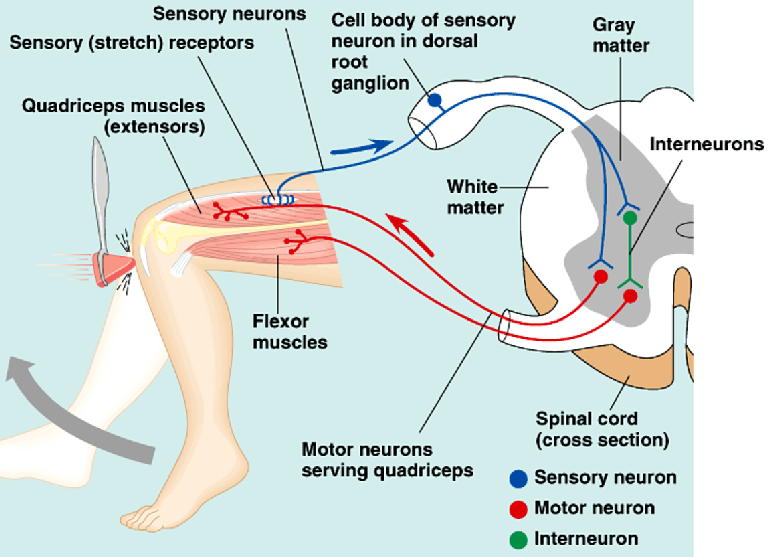197.WHAT CAUSES A REFLEX?
When you go to the doctor, does he ask you to cross your legs and then hit your knee with a small rubber hammer?
What the doctor is testing is the reflex action. In this case, it is a special reflex called the patellar reflex, because the hammer struck a ligament called the patellar ligament.
What actually happens when the hammer strikes the ligament? A stimulus passes from a sensory cell in the ligament to the spinal cord. There it is transferred to a motor cell, and this sends an action current to the muscles of the leg. The leg twitches, just as if it were about to kick an enemy in self-defense.
This action is a reflex action. In other words, it is automatic. We have no control over it because it is not an action that is started in the brain. For instance, when you go to bed and close your eyes, you are performing a voluntary act. But if a speck of dust flies into your eye, you close it immediately whether you want to or not. This automatic movement is a reflex.
So we can define a reflex as an automatic response by the body to an external stimulus, without the influence of the will.
How does this happen? – The spinal cord is the transfer point for our reflexes. When sensory cells bring in the stimulus from the skin, they go to the spinal cord and are transferred there to motor cells. These motor cells send out currents to certain muscles and make them act. The nerve impulses do not pass through the brain.
More than 90 per cent of all the actions performed by man’s nervous system are reflex actions!



Leave a Reply